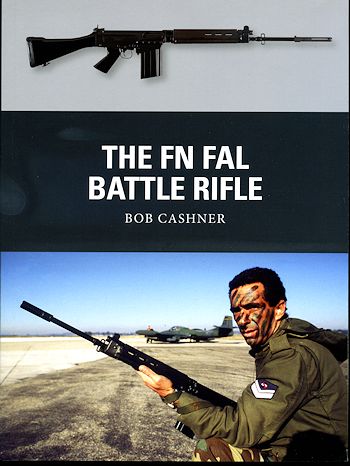 After
WWII, many nations carried on with what they used during that conflict. However
there comes a time when an Army wants something better. WWII saw the end of the
military bolt action rifle and the introduction of the self-loading M1 Garrand,
a weapon liked by all who used it. However, the Garrand had some short comings,
one of them being the 8 round clip. Something else was needed.
After
WWII, many nations carried on with what they used during that conflict. However
there comes a time when an Army wants something better. WWII saw the end of the
military bolt action rifle and the introduction of the self-loading M1 Garrand,
a weapon liked by all who used it. However, the Garrand had some short comings,
one of them being the 8 round clip. Something else was needed.
The most Germans had developed what are now known as
'assault guns' and the Soviets developed the still popular AK-47. It was very
much a self loading gun, but not exactly the most accurate one around. Armies
were looking for a self loading rifle that was accurate and able to take a
respectable size clip of rounds. It was also considered useful to be able to
fire the gun in the semi-automatic mode where squeezing the trigger would fire
off a few rounds each time. Full automatic was also used, but after the first
few rounds, the kick of the gun would rapidly decrease accuracy.
There was also some disagreement over the round to be
used. NATO was hoping to standardize on something that would be able to be used
in a variety of guns. Some in the US and UK wanted a .280in round, but others
wanted a 7.62mm round. Nothing in weapons procurement is straightforward and
after the usual machinations, the 7.62 was chosen.
Meanwhile, several companies in both the US and Europe
were developing guns. The one that eventually won out was the Belgian FN FAL.
This was later produced under license with various modifications in a number of
nations for their own national armies and for export. A bit of an ironic aside
is that the only place that did not go for the gun is the only place that still
makes them; that is the US. So popular was this gun that it was rightly called
the 'weapon of the Cold War'.
In this book on the FN FAL, author Bob Cashner covers
not only the development of the gun as well as competitors, but also the story
behind the choice of round. The book then goes into the various nations that
used and produced the gun, concentrating on the differences between the
versions. Then we get an in depth look at the gun and all the various
accessories that it could use. This is followed by the various conflicts
throughout the world during this time and the experiences of the forces using
the gun. Often it would involve two armies, both equipped with the same weapon.
This is then followed by a secton on the impact of the gun in the world of
weapons, including its strengths and weaknesses.
In all, it makes for an excellent look at this important
rifle, which has mostly been displaced by more modern weapons though several
nations still use it. It is well written and an interesting read, which is just
as important as the information it provides. Highly recommended.
October 2013
For more on the complete line of Osprey books,
visit www.ospreypublishing.com
or contact them at Osprey Direct, PO Box 140, Wellingborough, Northants,
NN8 2FA, UK. In the US, it is
Osprey Direct at 44-02 23rd St, Suite 219, Long Island City, NY 11101., where you can
get a catalogue of available books.
If you would like your product reviewed fairly and quickly, please
contact
me or see other details in the Note to
Contributors.
 After
WWII, many nations carried on with what they used during that conflict. However
there comes a time when an Army wants something better. WWII saw the end of the
military bolt action rifle and the introduction of the self-loading M1 Garrand,
a weapon liked by all who used it. However, the Garrand had some short comings,
one of them being the 8 round clip. Something else was needed.
After
WWII, many nations carried on with what they used during that conflict. However
there comes a time when an Army wants something better. WWII saw the end of the
military bolt action rifle and the introduction of the self-loading M1 Garrand,
a weapon liked by all who used it. However, the Garrand had some short comings,
one of them being the 8 round clip. Something else was needed.